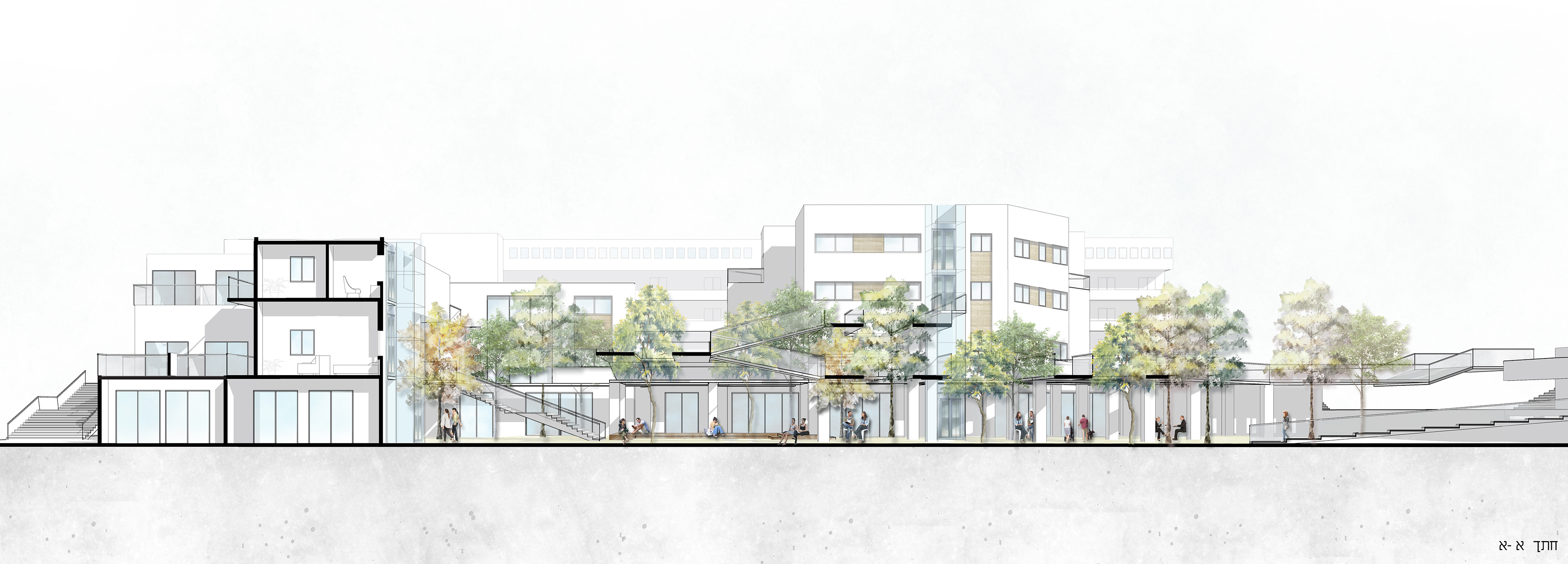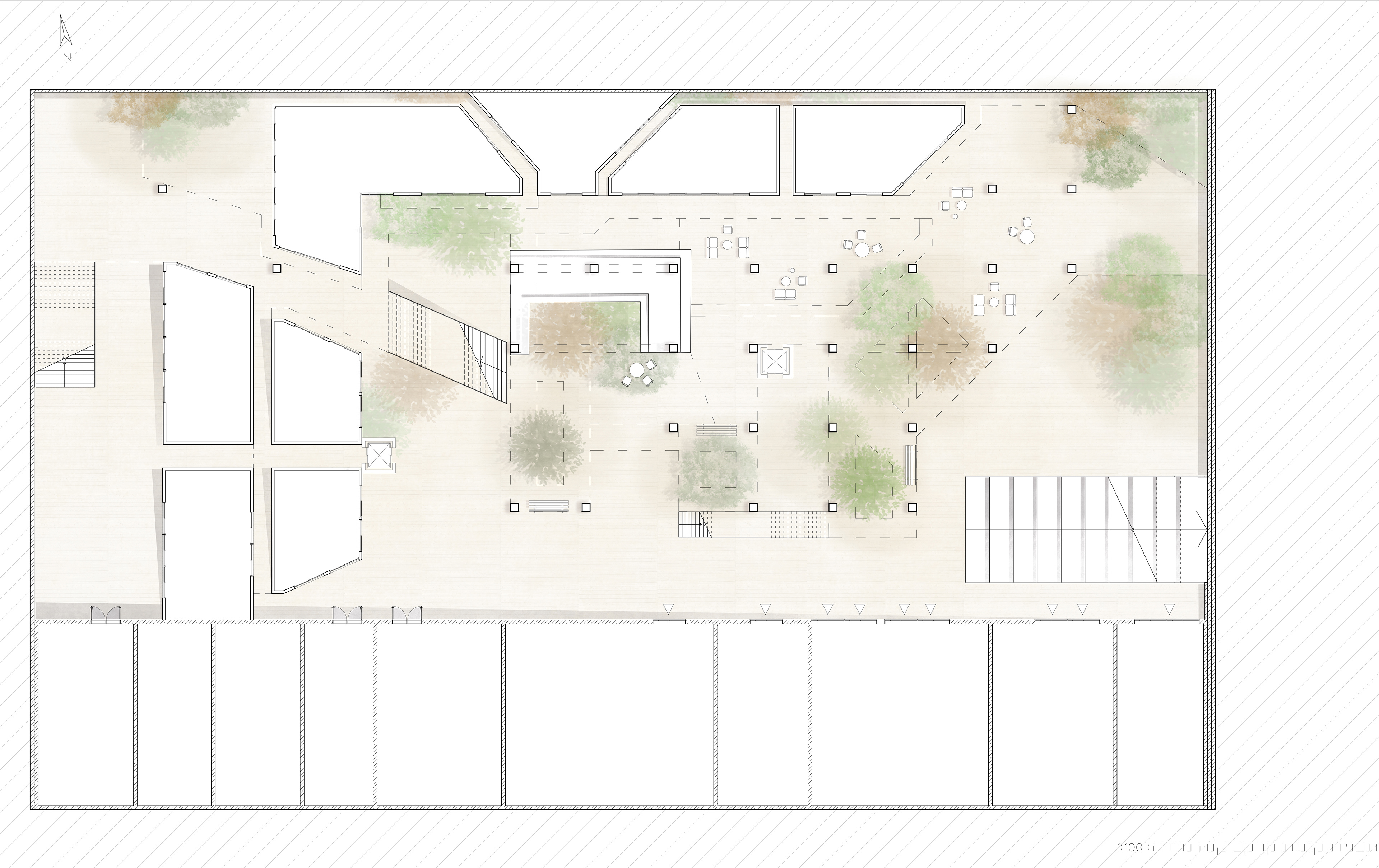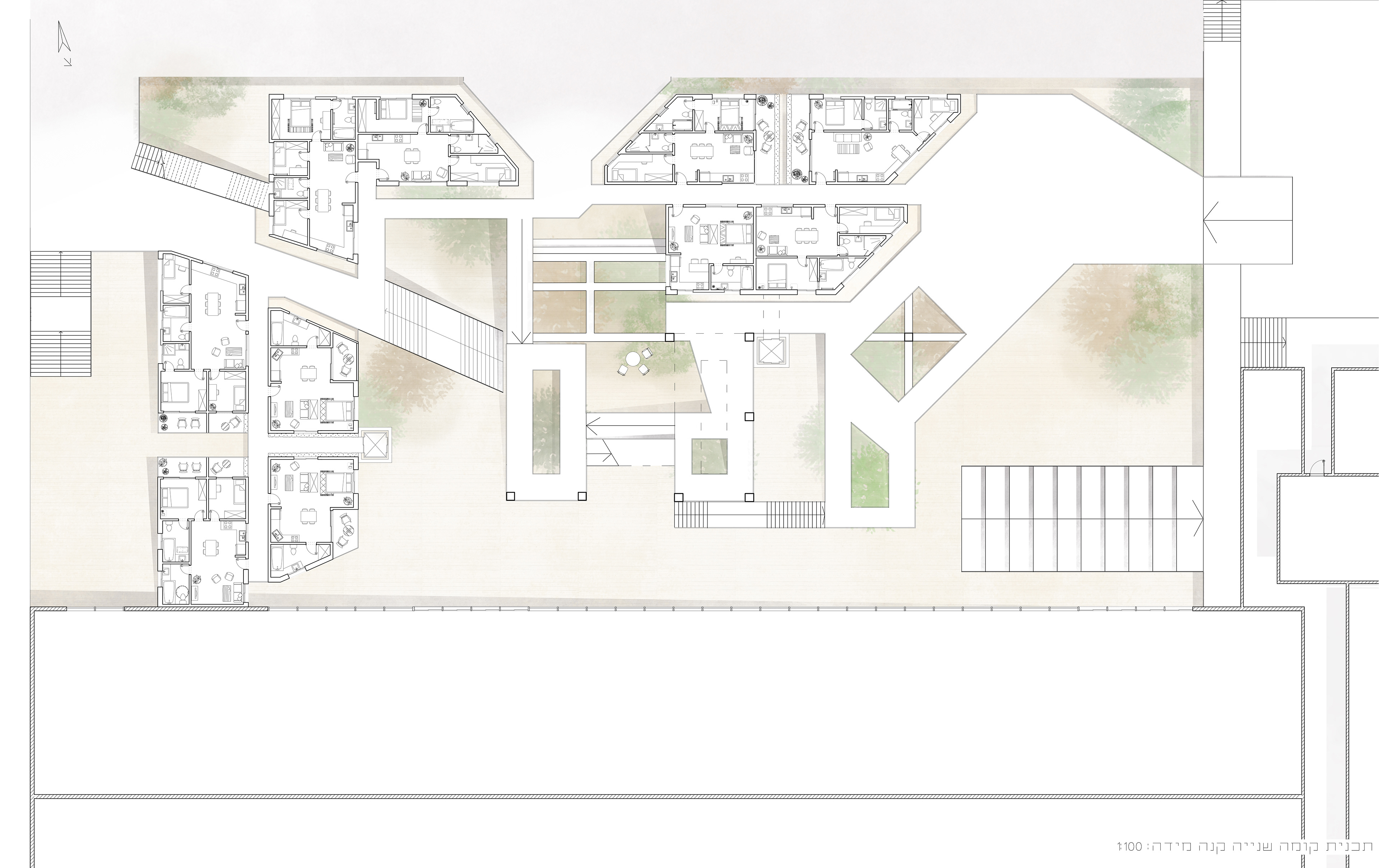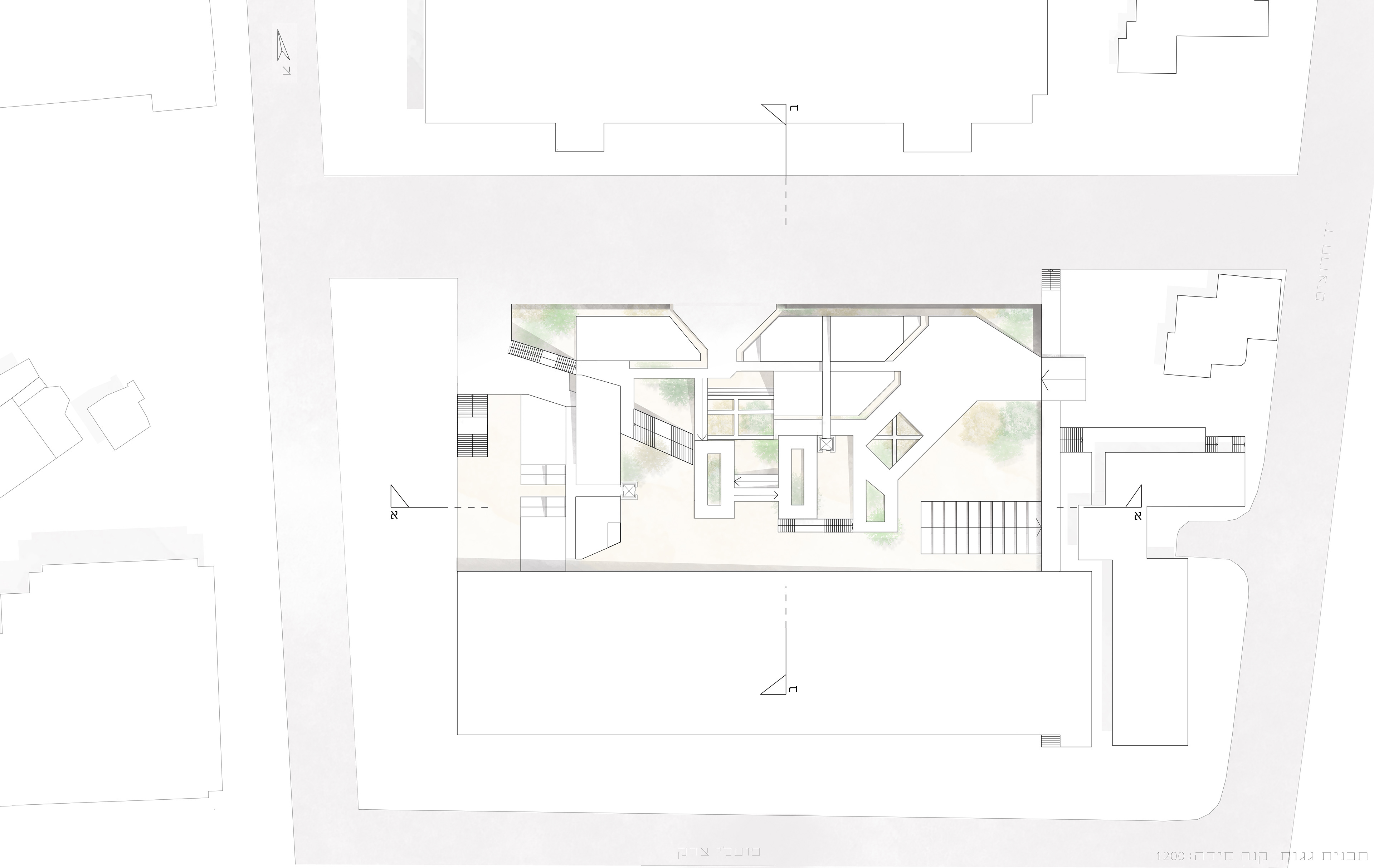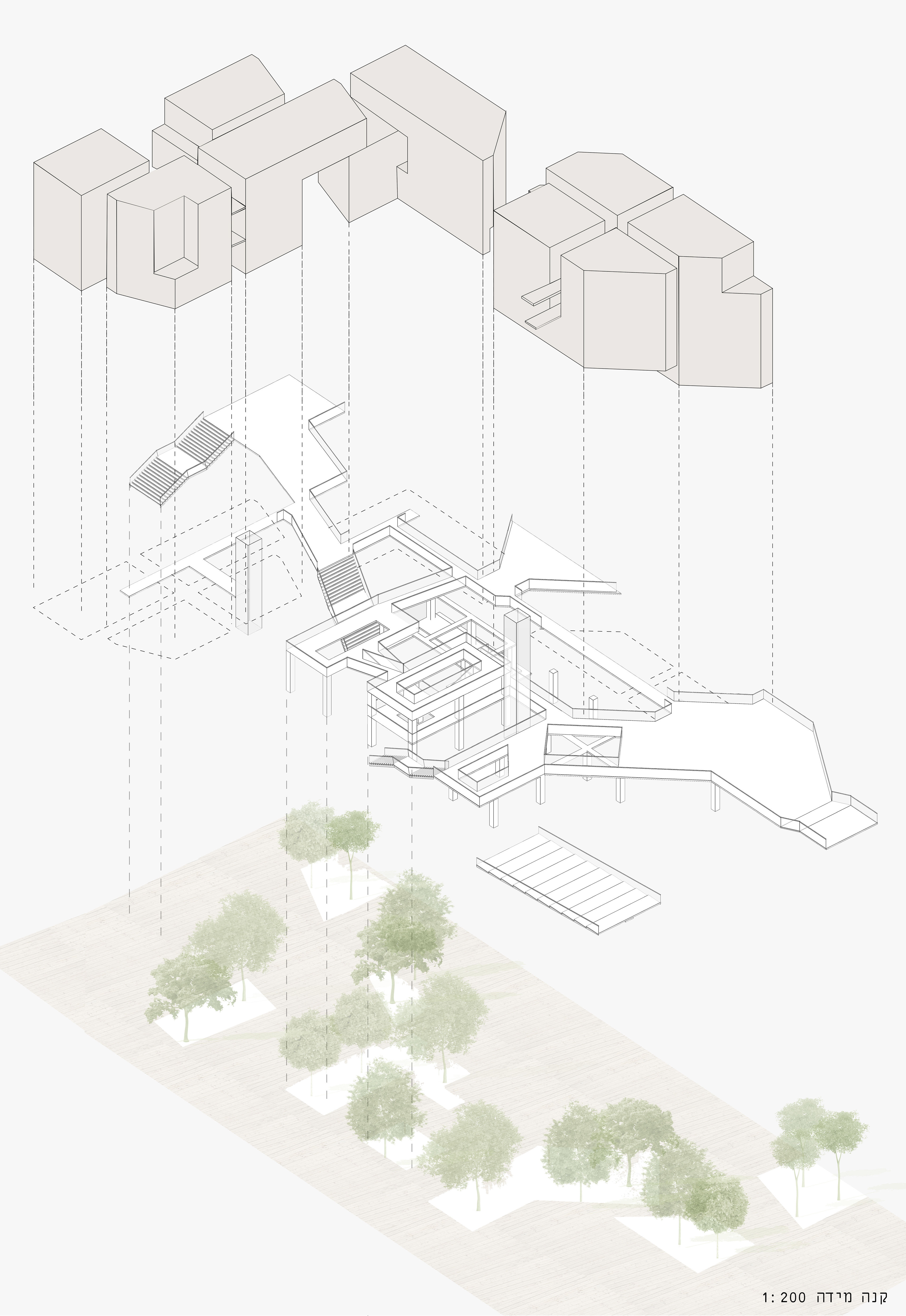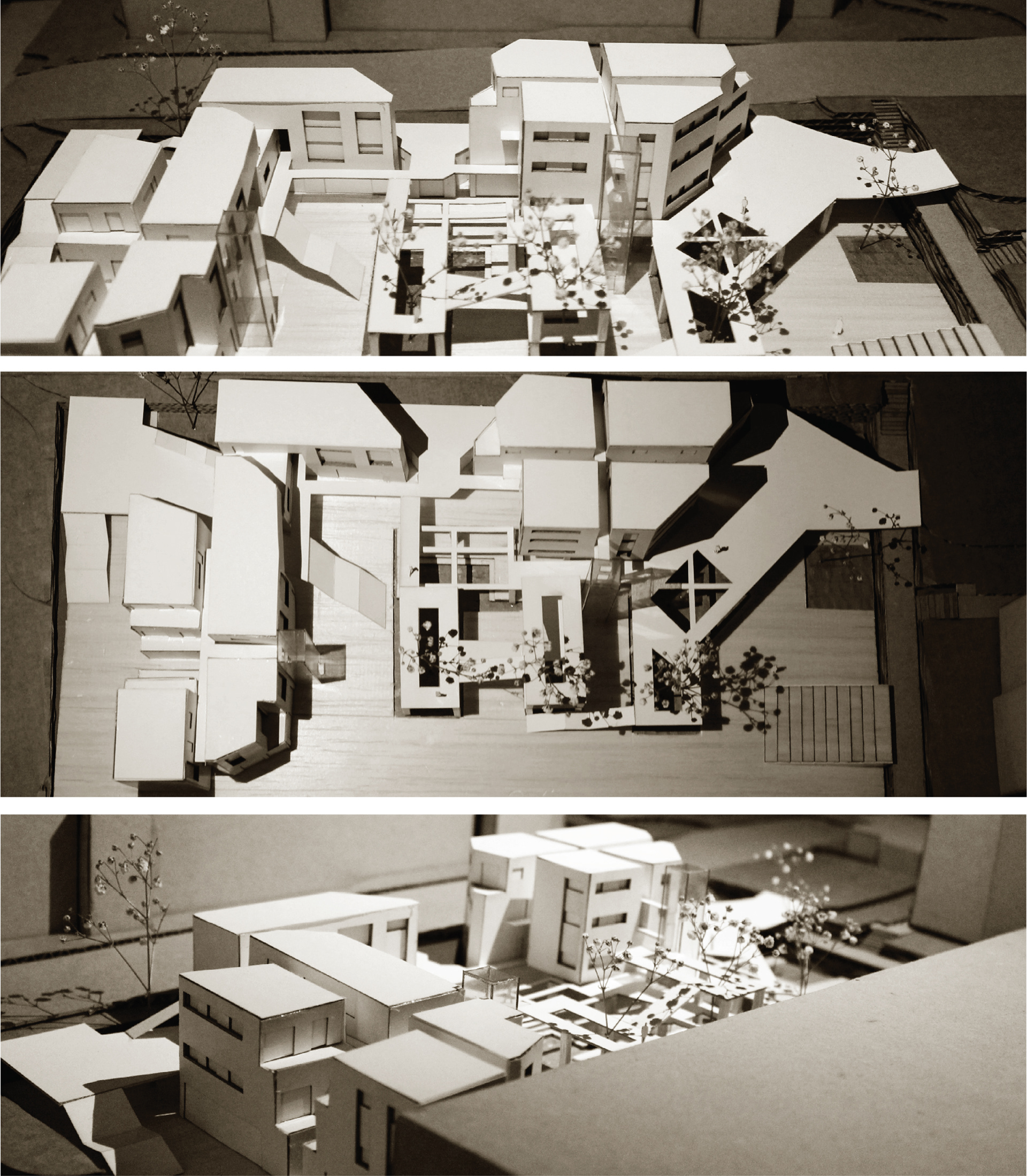In the parking lot that borders the streets of Yad Harutzim and Poali Tsedek there are pedestrians and vehicles on the same level. In this defined area, dismantling levels began (as seen in the area), but they are not fully functional because of inconvenience to the pedestrian, which led to a central level used both for cars and pedestrians. The site, the industrial yard, is actually used as a shortcut; while shortcuts are the person's accessibility to the place, a way to be able to get there on the way to his destination. To understand them it should be clear who they serve and who they don't, and what makes them available or unavailable. The site created an opportunity for options of space that will interpret the potential in the occupation of private levels and on the other hand for the public, with possibility of connecting the two into a new situation. That is, it's important to visualize the whole place as one unit that creates a connection and separation at the same time. The dilemma of when it is together, and when it is separate, accordingly to the potential of the levels.
The community is involved in a wide range of ages, and defines various needs that need to work together. In the complex today, the population does not function as a community and there is no communication relationship, everyone is in his own working area. The interesting issue is, what types of people mingle in the same space, and how the separation between them is natural. In fact, it is about the separation between private and public, and "different levels" that simultaneously create the urban intensity and the quiet privacy of the people living there.
The building and its circulation system link the transition between private and public in different levels, in a complex manner that produces separation and connection at the same time. Separating the levels and the circulation is not only an element of movement, but it contains the possibilities of meeting places and residences.
In the various levels there are public and private meeting points (the apartments) which have created an interesting and complex relationship. This means creating privacy separations for people living there, and at the same time preserving the urban and public intensity of the place. The level separations do not create closed spaces, but create relationships between the levels of the bottom to the top, so that people will feel they are in the same space that combines different functions.
Led by:Barak Pelman and Michal Braier

